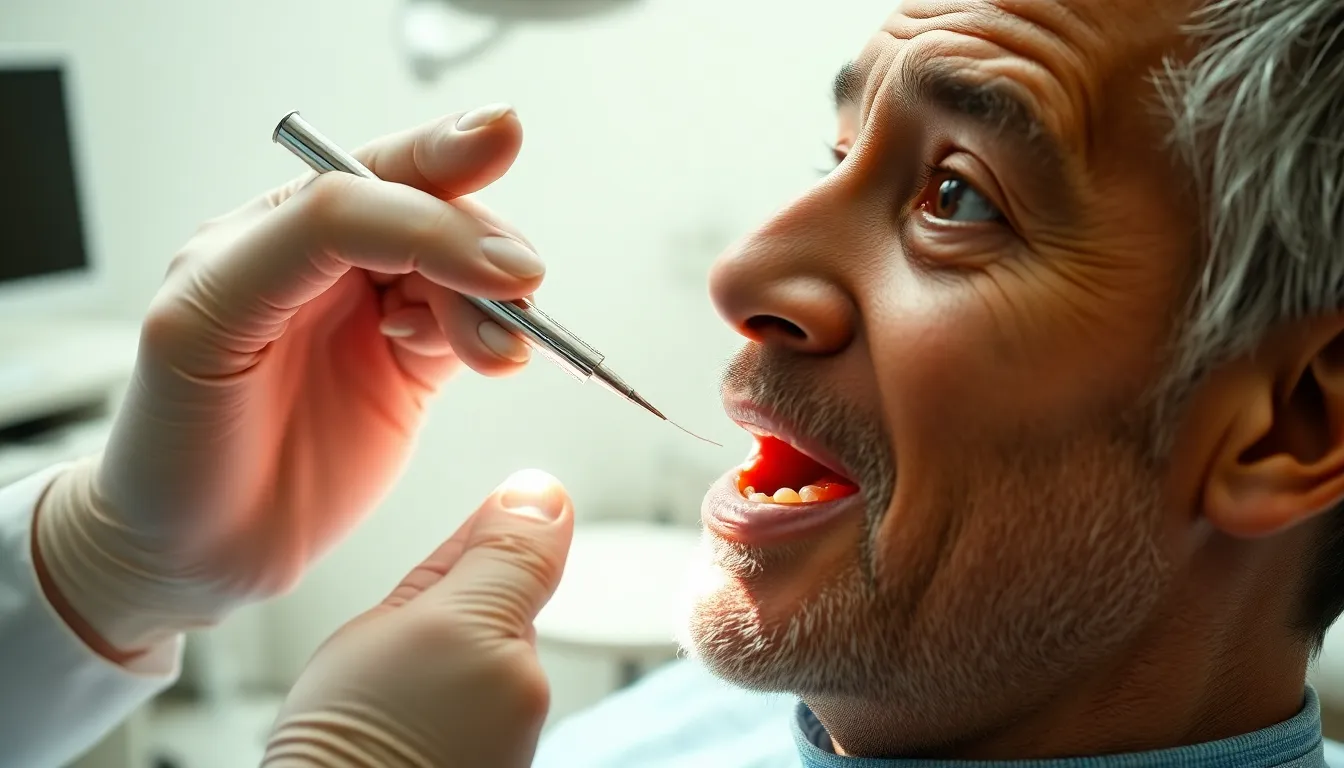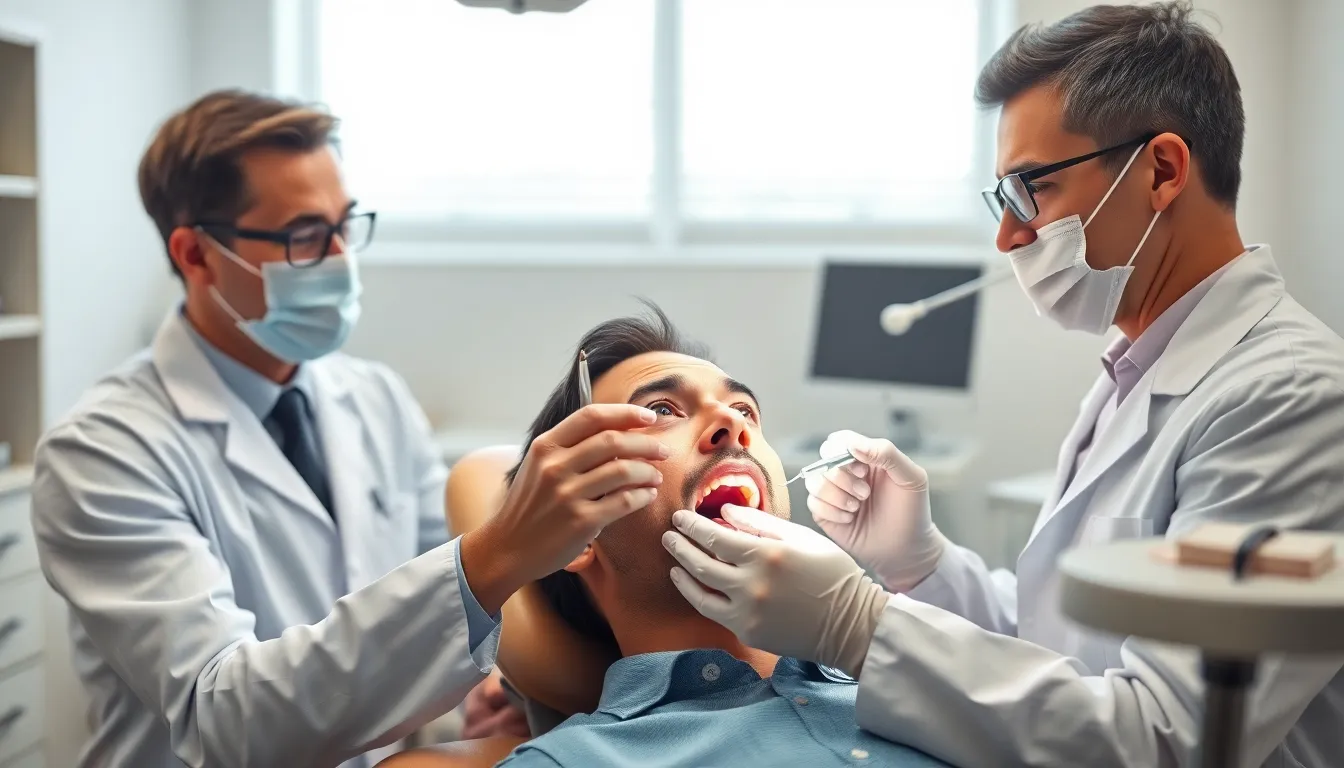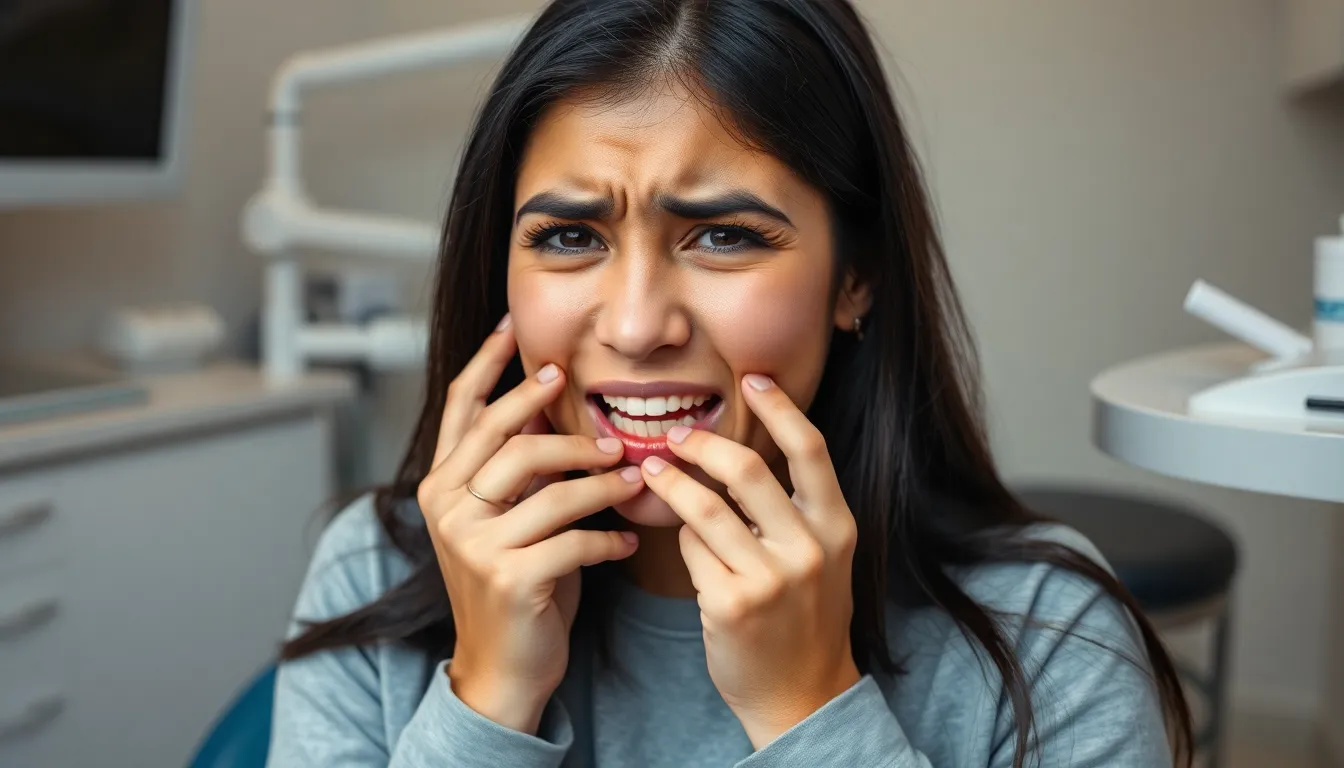Does eating ice hurt your teeth? If you’ve ever felt that sharp, painful sensation after biting into ice, you’re not alone. This common habit – known as pagophagia when done compulsively – might seem harmless, but it could be causing damage to your dental health.
Many people enjoy chewing ice as a way to cool down or as a habit when finishing a cold beverage. But, dentists often warn against this practice because the extreme cold and hardness of ice can create microfractures in your tooth enamel, potentially leading to sensitivity, cracks, or even broken teeth. Understanding how ice affects your teeth can help you protect your smile and avoid painful dental problems down the road.
Understanding the Connection Between Ice and Tooth Pain
How Ice Affects Your Tooth Enamel
Ice creates a important temperature differential when it comes into contact with your teeth. Tooth enamel, even though being the hardest substance in your body, responds poorly to extreme temperature changes. This rapid cooling causes the enamel to contract quickly while the inner dentin layer contracts at a different rate, creating microscopic cracks over time. These tiny fissures weaken your protective enamel layer, leaving teeth vulnerable to sensitivity and further damage.
Dr. Todd B. Harris notes, “I’ve seen patients with hairline fractures who couldn’t understand why their teeth suddenly became sensitive. When we discussed habits, ice chewing was often the culprit they hadn’t considered harmful.”
The Science Behind Thermal Shock
Thermal shock occurs when materials expand or contract at different rates due to temperature changes. Your teeth contain multiple layers – enamel, dentin, and pulp – each responding differently to cold temperatures. The outer enamel contracts faster than the inner dentin when exposed to ice (which can be as cold as 32°F or 0°C), creating internal stress that leads to microfractures.
These temperature-induced structural changes explain why many patients experience immediate sharp pain when biting ice. The nerve-rich pulp at your tooth’s center detects these sudden temperature fluctuations, triggering pain signals to alert you that something’s wrong.
Common Symptoms of Ice-Related Dental Damage
Ice consumption frequently causes recognizable dental symptoms. Increased sensitivity to hot and cold foods ranks as the most common early warning sign, often manifesting as a sharp, shooting pain. Visible cracks or chips appear in more advanced cases, particularly along the biting surfaces or edges of teeth.
Small fractures may develop into larger ones over time, creating pathways for bacteria to enter deeper tooth structures. One patient shared, “I thought my occasional ice chewing was harmless until I bit down on a piece of soft bread and felt excruciating pain. My dentist found a crack running from the top of my molar all the way to the gumline – all from my ice habit.”
Risk Factors That Increase Tooth Vulnerability
Several factors amplify your risk of ice-related dental damage. Existing dental work such as fillings or crowns creates structural weaknesses where your natural tooth meets restoration materials. Age-related enamel thinning makes teeth more susceptible to temperature-induced damage, as does a history of teeth grinding or clenching.
Certain medical conditions like acid reflux or bulimia that expose teeth to stomach acid weaken enamel, making it less resistant to mechanical stresses from ice. Medications causing dry mouth reduce the protective benefits of saliva, further compromising your teeth’s natural defenses against temperature extremes.
The Science Behind Tooth Sensitivity
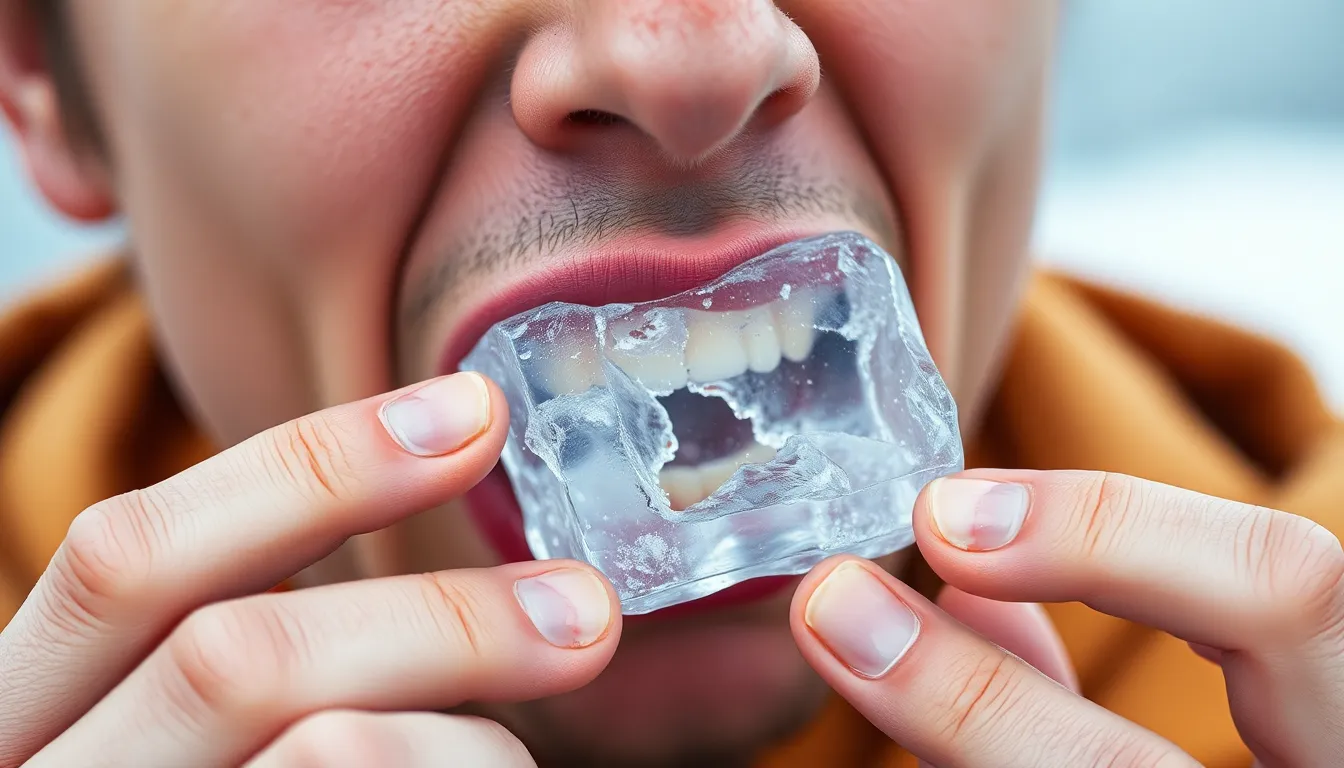
Tooth sensitivity from ice isn’t just an uncomfortable sensation—it’s your body’s warning system in action. Temperature-related dental pain has exact biological causes rooted in tooth anatomy and protective mechanisms.
How Teeth Respond to Temperature Changes
Your teeth react dramatically to cold stimuli like ice because temperature changes directly affect their inner structures. Healthy enamel acts as a protective barrier, insulating the sensitive inner layers from extreme temperatures. When you bite into ice, the sudden cold creates a thermal shock that radiates through your tooth structure. Microscopic cracks called craze lines often form from this stress, allowing cold sensations to penetrate deeper into the tooth. Dr. Harris explains, “I’ve treated countless patients who never realized their ice-chewing habit was creating invisible damage until sensitivity suddenly appeared—often the first sign of those tiny fractures expanding.”
Exposed Dentin and Nerve Endings
Beneath your enamel lies dentin, a more porous material containing thousands of microscopic tubules connected directly to nerve endings. When enamel becomes compromised from ice chewing, these tubules become exposed to temperature changes. Cold temperatures from ice stimulate fluid movement in these tubules, triggering nerve responses that register as sharp, shooting pain. One patient described it as “lightning bolts shooting through my tooth whenever I drink anything cold.” This sensitivity indicates that protective enamel has been compromised, exposing the dentin beneath. The repeated stress from ice chewing makes teeth particularly vulnerable to chipping and fracturing, especially if you have existing dental work like fillings or crowns. Your natural teeth can withstand some pressure, but the hardness of ice exceeds what tooth structures were designed to handle regularly.
Immediate Effects of Chewing Ice on Teeth
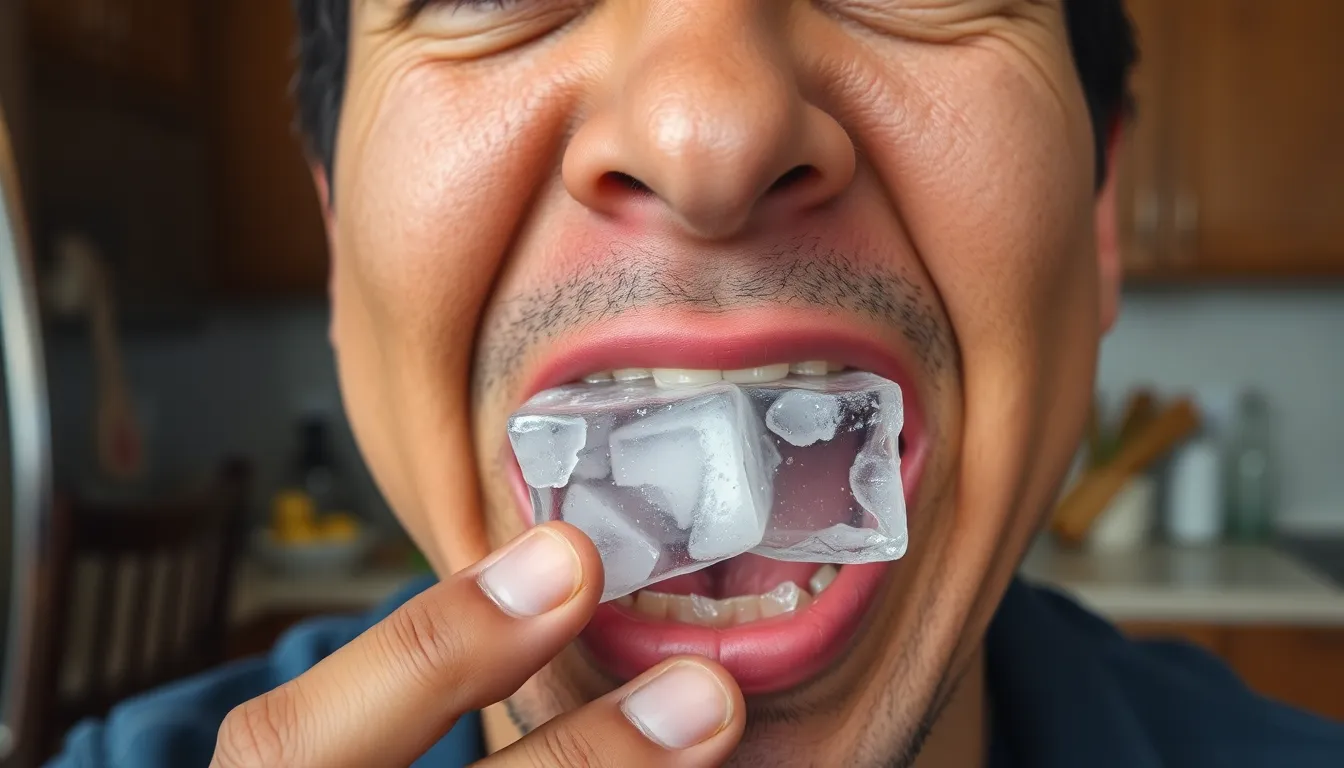
Chewing ice causes immediate and potentially damaging effects on your dental health. The combination of extreme cold and hard texture creates unique stresses that your teeth aren’t designed to handle regularly.
Microfractures and Enamel Damage
Your tooth enamel experiences small, often invisible cracks called microfractures or craze lines when you bite into ice. These tiny fissures develop because the force required to break ice exceeds what healthy enamel can withstand without stress. Over time, these microscopic cracks widen with repeated ice chewing, eventually leading to visible fractures or complete tooth breakage. Enamel erosion from this habit makes your teeth significantly more vulnerable to sensitivity, decay, and cavities. Dr. Todd B. Harris recalls, “I’ve treated many patients who were shocked to discover their chronic ice chewing habit had created a network of microfractures throughout their molars, requiring extensive restoration work.”
Temperature Shock to Dental Nerves
The extreme cold of ice triggers rapid contraction in your teeth, creating what dentists call thermal shock. This temperature change, combined with the physical pressure of chewing, sends sharp pain signals directly to your dental nerves. Teeth with thinning enamel or exposed dentin feel this effect most intensely. The thermal stress doesn’t just cause momentary discomfort—it gradually increases overall tooth sensitivity, making your teeth react painfully to both hot and cold foods. Patients with existing dental work like fillings or crowns face even greater risks, as these restorations can chip, crack, or dislodge when subjected to the dual stresses of cold temperatures and biting force. The damage often requires costly repairs that could have been avoided by simply letting ice melt naturally instead of chewing it.
Long-Term Consequences of Ice Chewing Habits
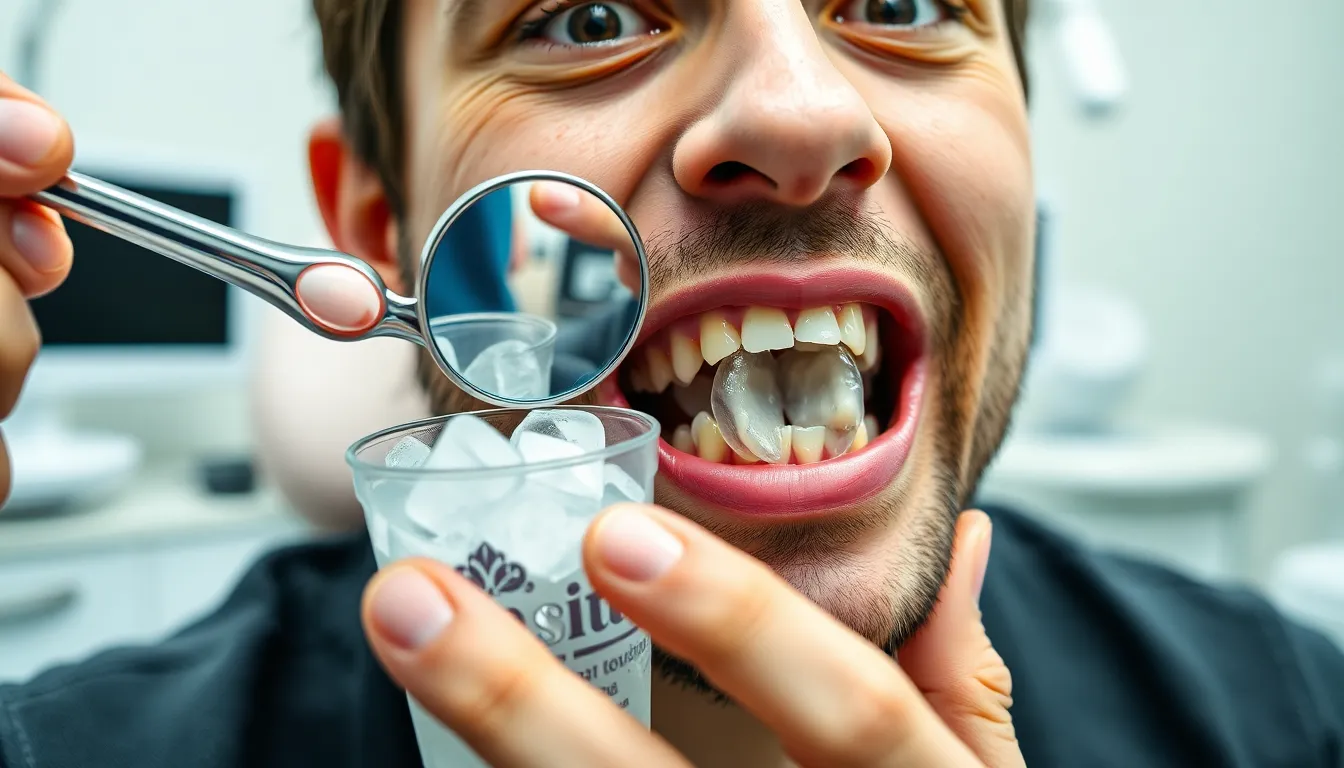
That innocent ice-chewing habit can lead to serious dental problems over time. Continuous ice consumption creates cumulative damage that often goes unnoticed until important harm has occurred.
Enamel Erosion Over Time
Tooth enamel, even though being the hardest substance in your body, remains vulnerable to the repeated stress of ice chewing. Microscopic cracks or “craze lines” develop in the enamel much like fractures on a windshield—starting small but gradually deepening and widening with continued ice consumption. These tiny fissures compromise your enamel’s integrity, leading to thinning and erosion of this protective outer layer. Once your enamel begins breaking down, your teeth become increasingly susceptible to sensitivity and decay as the inner, more vulnerable layers are exposed. Dr. Harris notes, “Many patients are shocked when I show them the extensive network of fine cracks throughout their molars—all stemming from what they considered a harmless ice-chewing habit.”
Risk of Dental Emergencies
Cracks from ice chewing don’t just stay small—they can expand into major fractures or chips that constitute dental emergencies. Your teeth with existing dental work face even greater risks, as the force of chewing ice can break the bonds of fillings or crowns, causing them to loosen or completely dislodge. This damage creates gaps where bacteria can enter, potentially leading to cavities forming underneath restorations. Severe fractures often necessitate extensive and costly treatments including fillings, root canals, crowns, or in worst-case scenarios, complete tooth extraction followed by implants when the tooth can’t be saved. One patient came to our office after a large molar split completely in half while chewing ice at a restaurant, requiring emergency extraction and an eventual implant costing thousands of dollars. Also, chronic ice chewing frequently damages existing dental work, increases sensitivity to temperature extremes, and can sometimes indicate underlying health issues such as iron deficiency anemia that require medical attention.
Why Some People Crave Ice (Pagophagia)

Craving ice, known medically as pagophagia, isn’t just a random habit but often signals underlying health issues. This compulsive desire to chew or consume ice goes beyond simply enjoying a cold sensation and can be your body’s way of communicating deeper concerns.
Medical Conditions Associated with Ice Cravings
Iron deficiency anemia stands as the most common medical condition linked to pagophagia. While researchers haven’t pinpointed exactly why anemia triggers ice cravings, the connection is well-documented across many clinical studies. Many patients experience relief from their ice cravings after their anemia is properly treated.
Dr. Todd B. Harris recalls, “I had a patient who constantly chewed ice for years, damaging several molars in the process. After blood work revealed severe iron deficiency, her physician prescribed supplements, and within weeks, her ice cravings disappeared completely.”
Eating disorders can also manifest through ice consumption habits. Some individuals with anorexia or bulimia turn to ice as a zero-calorie substance that provides oral stimulation without contributing to caloric intake.
Dry mouth conditions trigger ice cravings in some people as the cold sensation temporarily relieves discomfort. The cooling effect provides momentary moisture to parched oral tissues, creating a cycle of repeated ice consumption.
Other potential causes include nutritional deficiencies beyond iron, stress-related behaviors, and certain medications that alter taste perception or cause dry mouth. Pregnancy sometimes triggers temporary pagophagia, with cravings typically resolving after delivery.
If you’re experiencing persistent ice cravings, consider consulting both your dentist and physician. Your compulsion for ice might be protecting your teeth from far more than just cold sensitivity—it could be an important indicator of your overall health status requiring proper medical attention.
Protecting Your Teeth From Ice Damage
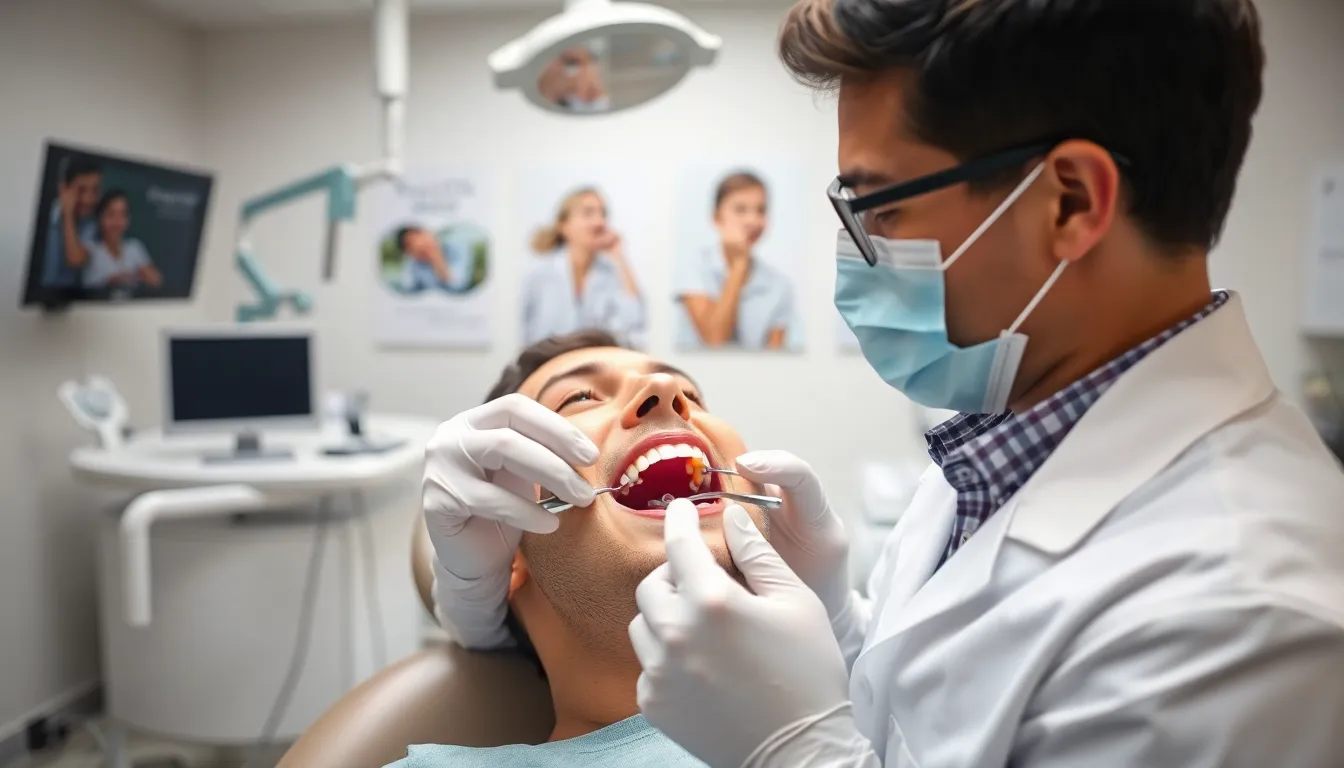
Preventing ice-related dental damage requires both awareness and proactive care. These practical strategies can help protect your teeth while addressing the underlying causes of ice cravings.
Dental Care Tips for Ice Lovers
Eliminating ice chewing completely offers the best protection for your dental health. Regular dental check-ups are essential for monitoring early signs of enamel wear or microscopic cracks from occasional ice consumption. Use a sensitivity-formulated toothpaste to strengthen enamel and reduce discomfort if you’re transitioning away from the habit. Consider wearing a custom mouthguard at night if you’ve developed teeth grinding habits alongside ice chewing, as this combination creates compounded damage to dental structures.
Dr. Todd B. Harris notes, “Many patients don’t connect their sensitivity issues to their ice chewing habits until we show them the network of fine cracks developing in their enamel. Early intervention is crucial to prevent these minor fractures from deepening.”
Address any nutritional deficiencies that might trigger ice cravings, particularly iron deficiency anemia, which research consistently links to pagophagia. Maintaining optimal hydration throughout the day reduces dry mouth conditions that sometimes lead to ice cravings as a relief mechanism.
Alternative Habits for Ice Chewers
Switching to sipping cold water provides similar refreshment without the damaging biting pressure on teeth. Crushed or shaved ice in beverages offers a gentler texture that discourages aggressive chewing while still providing the cold sensation many crave. Sugar-free gum satisfies the oral fixation aspect of ice chewing without risking dental damage, making it an excellent substitute for breaking the habit.
“I had a patient who cracked two molars from chronic ice chewing,” shares Dr. Harris. “After discovering she had iron deficiency anemia and beginning treatment, her cravings diminished significantly. She now keeps frozen grapes as an occasional treat when she wants something cold to munch on.”
Frozen fruits like grapes or berries can provide a safer alternative with similar satisfaction when eaten occasionally. Crunchy vegetables such as carrots or celery deliver the satisfying crunch without the temperature extremes that damage enamel. Cold smoothies consumed with a straw bypass teeth entirely while still providing refreshing cold sensations.
Behavioral techniques like tracking your ice consumption helps create awareness of the habit, which is often the first step toward changing it. Consulting both your dentist and physician about persistent ice cravings ensures you’re addressing potential underlying health conditions rather than just the symptom.
When to See a Dentist About Ice-Related Tooth Pain
Dental attention becomes crucial when you experience persistent pain from ice chewing. Signs that warrant an immediate dental visit include visible cracks in your teeth, sharp sensitivity to temperature changes, or loose dental work. Early intervention often prevents more serious complications that could lead to tooth loss.
Dr. Todd B. Harris explains, “Many patients ignore the initial warning signs of ice-related damage, only seeking help when the pain becomes unbearable. By then, what might have been a simple repair has often progressed to needing more invasive treatments.”
Contact your dentist promptly if you notice:
- Persistent pain that lingers after temperature exposure
- Visible cracks or fractures in your tooth enamel
- Increased sensitivity to hot or cold foods and beverages
- Loose fillings or dental crowns that feel unstable
- Chipped areas on the edges or surfaces of teeth
“Last month, I treated a patient who’d been chewing ice daily for years,” shares Dr. Harris. “She only came in when a molar finally fractured while enjoying her usual afternoon ice water. What started as tiny, invisible cracks eventually compromised the structural integrity of her entire tooth, requiring a crown to restore function.”
Dental professionals can identify early signs of damage that aren’t visible to the untrained eye. X-rays reveal hidden cracks beneath the surface, allowing for preventative treatments before catastrophic damage occurs. Your dentist’s specialized training helps differentiate between harmless sensitivity and serious structural problems requiring immediate attention.
Conclusion
Breaking the ice-chewing habit is essential for protecting your dental health. What seems like a harmless behavior can lead to important damage including microfractures tooth sensitivity and even dental emergencies requiring expensive treatments.
If you find yourself craving ice regularly consider it might be your body signaling an underlying issue like iron deficiency. Speak with both your dentist and physician to address potential health concerns.
Remember that your tooth enamel can’t regenerate once damaged. Opt for safer alternatives like sipping cold water enjoying frozen fruit or chewing sugar-free gum. Your future smile will thank you for making this simple change today.
Frequently Asked Questions
Is chewing ice bad for your teeth?
Yes, chewing ice is harmful to your teeth. The habit, known as pagophagia when compulsive, can cause microfractures in tooth enamel. These tiny cracks develop due to thermal shock and the physical pressure of biting hard ice. Over time, these fractures can lead to increased sensitivity, visible cracks, chips, or even broken teeth that may require extensive dental work to repair.
Why do some people crave chewing ice?
Ice cravings often signal underlying health issues. The most common cause is iron deficiency anemia, with many patients experiencing relief from ice cravings after treatment. Other potential causes include eating disorders, dry mouth conditions, nutritional deficiencies, stress-related behaviors, and pregnancy-related changes. If you have persistent ice cravings, consult both your dentist and physician.
What are the first signs of ice-related tooth damage?
Early warning signs include increased sensitivity to hot and cold foods, occasional sharp pain when eating, visible hairline cracks (craze lines), small chips along tooth edges, and discomfort when biting down. Many people ignore these symptoms, but they indicate microscopic damage is occurring. Addressing these signs early can prevent more serious complications requiring expensive treatments.
Can enamel recover from ice chewing damage?
Unfortunately, tooth enamel cannot naturally regenerate once damaged. While minor demineralization can be partially reversed with fluoride treatments, actual cracks and fractures in enamel are permanent. The damage from ice chewing is cumulative, with microscopic cracks deepening over time. Professional dental treatments can address symptoms and prevent further damage, but stopping the ice-chewing habit is essential.
Who is most vulnerable to ice-related dental damage?
People with existing dental work (fillings, crowns), age-related enamel thinning, teeth grinding habits (bruxism), and certain medical conditions that weaken enamel face higher risks. Those with receding gums or exposed dentin are particularly vulnerable since these conditions already compromise tooth structure. People with iron deficiency anemia may also experience more damage due to increased ice consumption.
What treatments are available for teeth damaged by ice chewing?
Treatment options depend on damage severity. Minor sensitivity may require desensitizing toothpaste or fluoride treatments. Visible cracks might need dental bonding or veneers. Deeper fractures often require crowns, while severe cases might need root canal therapy if the pulp is exposed. In worst-case scenarios, severely damaged teeth may require extraction and replacement with implants or bridges.
How can I break the habit of chewing ice?
Try sipping cold water instead of chewing ice, use crushed or shaved ice in beverages if you must have ice, chew sugar-free gum to satisfy the urge for oral stimulation, or enjoy frozen fruits and crunchy vegetables as healthier alternatives. Track your ice consumption to raise awareness of the habit, and consult healthcare professionals to address any underlying health conditions contributing to your cravings.
When should I see a dentist about ice-related tooth pain?
Seek dental attention immediately if you experience persistent pain after consuming cold items, notice visible cracks in your teeth, have sudden increased sensitivity, feel pain when biting down, or observe any chips or fractures. Don’t ignore warning signs—early intervention can prevent more serious complications. Dental professionals can identify hidden damage through X-rays and provide appropriate treatment before major problems develop.



